Moscow tasting of Bordeaux 2009 – and thoughts on Moscow (with video!)
June 5, 2012
Bordeaux 2009 revisited, in Moscow
Go directly to the tasting notes (tasted on Friday, 1 June 2012)
You have to love Moscow, a great city of some 15 million people, many coming from the outstretched nine time zones of the former Soviet Union. Uzbekis, Tadjikis, Georgians, Ukrainians. All coming to try to make it big in the big city, as the Sinatra song goes for New York.
If I can make it here, can make it anywhere.
Tax rates are flat at 13% for all, whether you make pennies, whether you are a fat rich oligarch. But that is the official cost of doing business. From what I have heard, the “unofficial” cost involves paying a certain syndicate to keep you out of harm’s way … whether from corrupt officials – or from competitors who fabricate a story, pay for false witnesses, and pay off the judge to take you to Court and put you in jail.
Wild West Capitalism in the former Land of Lenin.
Full of contrasts, like the Soviet hammer and sickle decorating one metro station, with a bank machine just underneath. Or a Burger King near an enormous statue of Lenin.
Moscow is the only city I have been to so far where you can so easily flag down an unprofessional taxi. And those drivers range from an Uzbeki in a run down Lada to a Siberian in a spanking new Saab. The prices are very cheap, and if you reject one driver, a second one is invariably there, ready to accept your price. Some people worry about being picked up by a criminal, but my intrepid journalist pal Benoit Finck – Moscow correspondent for Agence France Presse – has been doing this for four years so far here with nary a problem…
English is hardly spoken here, even from most young people. So if you want to live in Russia, Russian is essential. But what an enriching experience for a foreign correspondent: learning new cultures, a new language and having fun.
This is my second visit in three years – and again in May/June – so the weather is fine. The notion of service however is often not. Unless if you go to an upscale place like White Rabbit, where the food and service are quite decent, even though waiters have a tendency to grab your plate or glass before you are really finished. But then again, this is a bit of a cliché. Because I enjoyed good service in several varied locations, from a café just in front of the Cathedral of Christ the Savior to a fun English style pub near the Arbat pedestrian zone, one of the very few such car free parts of the city…
There is no shortage of great monuments, museums and things to see of course. From the impressive Gum department store and the famous Kremlin and Red Square, to the Novodevichy Convent, probably the best-known cloister of Moscow. Its name, sometimes translated as the New Maidens’ Monastery, was devised to differ from an ancient maidens’ convent within the Kremlin. Unlike other Moscow cloisters, it has remained virtually intact since the 17th century. In 2004, it was proclaimed a UNESCO World Heritage Site.
The adjoining cemetery includes some famous dead Russians, from Gogol and Shostakovich to Yeltsin and Tupolev.
Of course going to the Bolshoi is a fine treat. The murderous Stalin may have done one decent thing in his life: he made ballet and theatre inexpensive, so that “the people” could see culture. When he was not killing people, at least they had cheap tickets to great art. That was the case for me when I saw Lady Macbeth of Mtsensk by Dmitri Dmitriyevich Shostakovich. Ironically, Stalin despised the musical as too bourgeois and had the great composer blacklisted: cheap tickets so long as you pleased the party. Whatever the case may be, it was very interesting to go to the Bolshoi, enjoy an opera by Shostakovich and then see his grave at the national cemetery. I am not a huge opera fan, but it – along with ballet – is certainly something to see in Moscow.
Anyway, although wealthy oligarchs and corrupt officials seem to run Russia these days, it is a far better place indeed than during the Stalin era. For example. And I met several Russian people who work in various jobs that are as normal as anywhere else, from a friend who does risk assessment for businesses and a banker, to a wine journalist and an optometrist’s assistant.
Another place worthy of visiting is the Tretyakov National Gallery, where one can see how talented Russian artists at the beginning of the 20th century were influenced by French Post Impressionism: with Gaugin-like paintings, and later Cubism. It was cool for example to see a rendition of Moscow Orthodox churches in a Cubist format (see above). Then of course came the years leading up to the Revolution of 1917, and a corresponding wave of creativity, including Kandinsky’s non representational art and Malevich’s “Suprematism”.
But let’s get down to the wine, shall we? I am supposed to write an article for Wine Business International on Bordeaux and the Russian market. Challenges that importers face (Russia has a notorious bureaucracy), high taxes (and other costs) that make a 10-euro wine in France cost 60 euros in Russia!
The Bordeaux 2009s were tasted by hundreds of Russian importers, sommeliers, and writers. There was a visceral excitement to the tasting at the lovely and luxurious Lotte Hotel. An inauspicious start with name tags that could not be found, in spite of having registered quite a while ago, but the Russians were very kind. We asked to have new badges made.
The wines (in bold, I liked; red and bold even more, when underlined, tops)
Red Graves
The wine of the tasting was Chateau Haut Bailly. As much as the Pichon Comtesse had blown me away in Dusseldorf, it was the Haut Bailly that stole the show in Moscow. Magnificently opulent, yet with fine structure, balance and freshness. Probably, it will not turn out as good as the 2010, but a superb 2009. Tasted twice. As in Dusseldorf, I experienced both weight and substance. Violet aromas. Richness on the palate, with a healthy tonicity, and a long finish. It seems to have opened up more this time around, a few months later.
By comparison, Chateau Pape Clement upped the richness, but one could also feel a sense of oak and alcohol, by comparison. Certainly an impressively made wine, and it has earned plaudits from Parker, but it lacks the nuance needed to be a star wine. For my taste.
Chateau Malartic Lagraviere displays a very smooth tobacco leaf aroma, with a rich palate – so much the characteristic of 2009. There is refinement here. Not as modern if you will as Pape Clement, but the 14% is felt. Just a touch. Still, I liked it, too.
I had a similar feeling with Chateau Latour Martillac, also very smooth, with a headiness coming from the 14%, while Chateau Larrivet Haut Brion had just a bit more flavor intensity. It was served just a touch too warm, so the alcohol was also felt, but the richness was delicious.
One of the problems was temperature, as the alcohol in the wines was felt more than necessary. Chateau Smith Haut Lafitte was served very cold however, a good strategy. Its label read 14.5% so for all I know, it could have been closer to 15%. But the cooler temperature was perfect, because the wine was smooth and lovely. Again, the success was echoed in my tasting in Dusseldorf. Is this 100 points? What does that mean, really? It is a success, to be sure, in 2009.
White Graves
As for the whites, I really liked Chateau Latour Martillac, with just 30% new oak, used only for the Semillon, it displayed precision and freshness more than the other whites I had tried. Chateau Larrivet Haut Brion’s 100% new oak was felt but not a l’outrance, and what I liked most was the peach and citrus aspects – it was fresh, too, mind you, with an overall appealing flavor profile. In the meanwhile, I was mildly disappointed with Chateau Malartic Lagraviere and Chateau Smith Haut Lafitte whites, which seemed a bit stolid. They seemed to lack the freshness levels of the preceding wines. Could it have been a temperature issue? I am not sure.
St Emilion
The Saint Emilions I tried were all good, although I was not as excited as I was with the better Left Bankers. Still, I liked Chateau Canon quite a bit even though 14.5% alcohol. Chateau Figeac was also particurarly delicious. A nice surprise here was Chateau Franc Mayne, which was succulent, but also pleasingly fresh enough for the vintage.
Moulis-Haut Medoc-Medoc
Two fine Moulis here. I preferred the Chateau Maucaillou to the Chateau Chasse Spleen today.
Some Haut Medocs impressed me quite a bit, and let’s start with Chateau Camensac, which has been, more often than not, rather average. But in 2009, an excellent job. Lovely perfume, fine Cabernet-driven fruit. Delicious and certainly not very expensive.
Chateau La Lagune displayed a very fresh nose, fine depth and was overall excellent – and once again confirmed its excellent performance when tasted in Dusseldorf in March this year. Again, well integrated 14% alcohol, its 60% Cabernet Sauvignon and 30% Merlot and … 10% Petit Verdot revealed rich blackberry and plum fruit, rich overall, but not marmalade or jam. A wine that also has fine structure.
I particularly was impressed with Chateau de Lamarque, which although it shows 14.5% on the label, it is closer to 15%. Somehow, the wine did not come across as alcoholic, although one could feel a certain drying on the finish, but it was just barely perceptible. The flavors were delicious and above all it showed fine charpente/structure. Another highlight, although not quite as exciting as the previous entries, was Chateau Coufran.
Chateau La Tour de By in Medoc was merely good enough, reflecting more its pedigree than the outstanding nature of the vintage.
Margaux
Chateau Giscours is a wine that does very well in the Russian market, and I need to figure out why… Although I enjoyed it, I found myself liking Chateau Du Tertre more in this tasting, as I had had the same experience in Dusseldorf. Du Tertre kicks ass in 2009, displaying more freshness and even more density, as well as its famous spicy aspects, which were particularly successful in 2009.
Chateau Labegorce proved succulent in this vintage, once again showing a very positive aspect that I had experienced in Dusseldorf in March. On the other hand, Chateau Lascombes was, again, a bit too oak-derived for my taste, as was the Chateau Prieure Lichine. I came away quite impressed with a certain “civilized” aspect coming from the Chateau Rauzan-Gassies, which is a somewhat controversial estate in that they are just fine with 50% mechanical harvesting. For many people, anathema when it comes to a cru classe, no less a 2nd growth. But co-owner Anne Francoise Quie insists that they master the technique and carry out selection after the picking on sorting tables. In any case, the 2009 is a success for this estate, which is not as expensive as others. A QPR opportunity? As for Chateau Rauzan Segla, which I really liked en primeur, I found the wine a bit closed in on itself, although the nose was very fine and fresh. The palate starts rich but then clamps down on the finish… Speaking to some other owners/reps present, some 2009s are indeed starting to close down. Not many, but some. Give this one more time, and it should develop very well in bottle.
St Julien
I was a touch underwhelmed by Chateau Beychevelle, which although very solid, came across as somewhat discheveled. The tannins were just a bit large grained and a hint of alcohol was peeking through, although perhaps that was due to a slightly warm temperature?
Chateau Gruaud Larose on the other hand was excellent, and perhaps the best of the St Juliens that I tried at this tasting. A toasty richness on the nose as well as the palate which, most important, displayed an inner juiciness that proved very appealing. Fine job.
The Chateau Leoville Poyferre by contrast seemed rather foreboding, with tannins coming to the fore, although it was also rich and toasty – some oak influence still present – and voluminous on the palate. I am certain that aging in bottle will translate this wine into something special. Like the Rauzan Segla, it seems to have closed down a tad.
Another wine that impressed me was Chateau Lagrange, which displayed an almost Margaux florality on the nose, followed up by a medium bodied elegant palate, suave, albeit tightening up on the finish – 2009 was quite a tannic vintage, one must emphasize, in spite of the richness and ripeness.
Pauillac
Kudos to Chateau Batailley. Here is a wine that is getting better and better. I recall enjoying the 2008 from bottle in New York – and the 2007, by the way. And here we have a “gangbusters” 2009, displaying excellent “ripe graphite” aspects, a tannic edge but rounded overall, fine grained, and long. A QPR to be sure, considering the fact that a rival like Grand Puy Lacoste will cost almost twice as much.
Chateau Clerc Milon, though good, was by contrast not as expressive – another one of those 2009s that has closed down a bit. But the volume and the potential are there to make this wine special with a few years of bottle age. Certainly Chateau d’Armailhac is more open, and more pleasing now, with a smoother delivery and softer aspects. But I suspect that Clerc Milon will outdistance it.
A fine surprise was Chateau Grand Puy Ducasse, which at 14% alcohol (60% CS and 40% M) displayed a dark fruit richness, and a smooth delivery, although a certain high alcohol Merlot aspect was present. Still, another QPR. Not as good as Batailley, but very good nonetheless.
Chateau Lynch Moussas was pretty, I suppose, but thoroughly overshadowed by the far superior Batailley.
Once again, as I had experienced at Dusseldorf three months ago, the Chateau Pichon Longueville Comtesse de Lalande was brilliant, with nuanced elegance combined with that 2009 richness. Although I must say that I got the impression of greater tightness here. Was it just starting to close down a bit, compared to three months ago? I wonder.
Saint Estephe
Chateau Lafon Rochet is solid St Estephe, with some tannic austerity but lots of stuffing and body. Give it much needed time in bottle, and you will be rewarded with an excellent QPR. But just as I had experienced in Dusseldorf, Chateau Phelan Segur was even better, displaying a lovely nose of black fruit, with a juiciness and fine body. An excellent QPR and a wine to seek in 2009.
Previous in-bottle notes on Bordeaux 2009, tasted in Duesseldorf in early March 2012


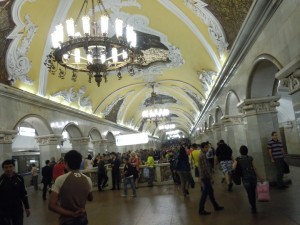
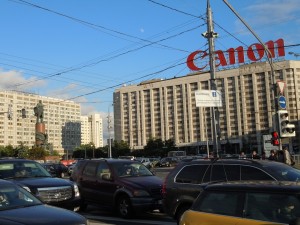


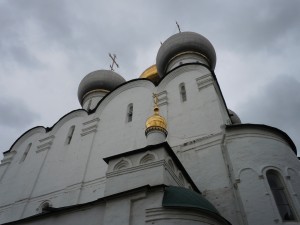
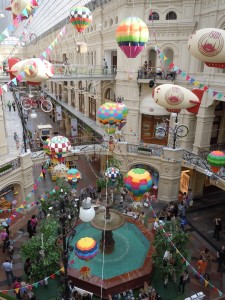
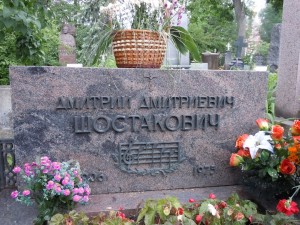
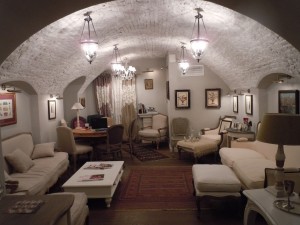
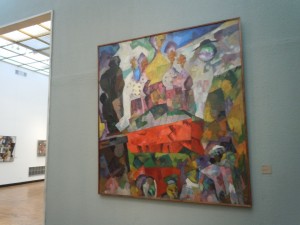


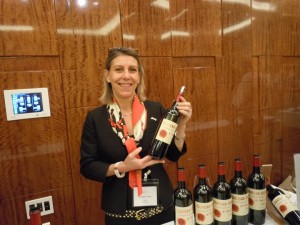
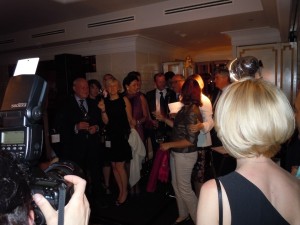
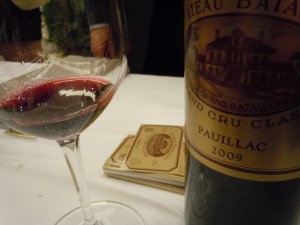
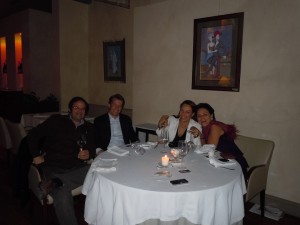
Claps for this:) Super like